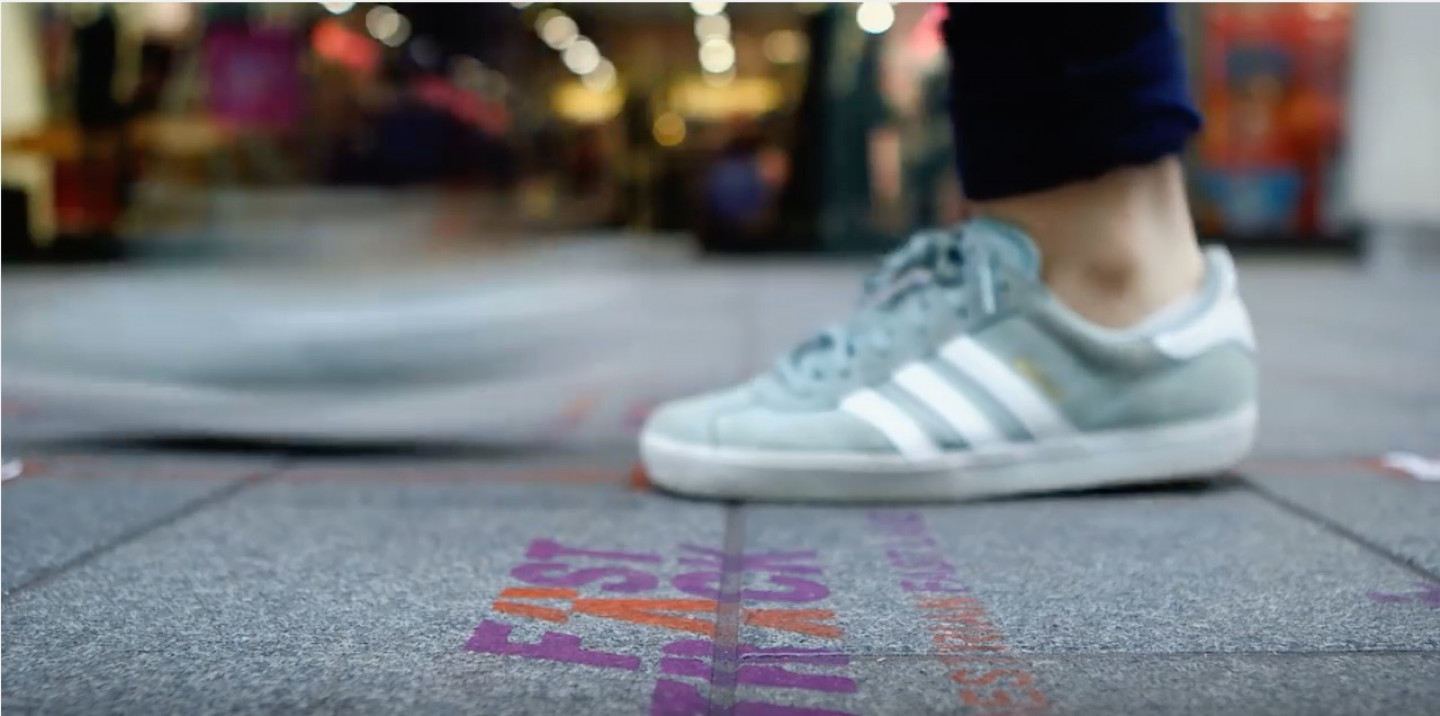Of the many challenges facing our cities from the affordable housing to the addressing impact of climate change, it seems another one is emerging at tortoise-pace on the horizon – slow-walking pedestrians.
Research by Argos, showing that 47 percent of British people are frustrated by slow walkers and would welcome fast lanes to overtake the laggards, has prompted the retailer to trial a fast lane outside their store in the Liverpool One shopping complex. Independent retail expert Dr Alastair Moore told The Daily Mail, “Perusing the high street is one of my favourite past times but I do have my own shopping bugbears, from middle of the street chattering to battling through the crowds.”
Aside from being a handy marketing tool for Argos coming up to Christmas, the slow pedestrians debate has touched a nerve. A debate in The Guardian had writer Claudia Pritchard speculating on the extension of lanes, “Yes, all texters in the shadows, smokers by the gutter, residents in Priority, couples on the edge. The unattached, instead of hanging hopefully around the checkouts with their coq au vin, for one, could join a singles-only fast lane. It could give a whole new meaning to speed dating.”
A more serious point is made on The Conversation website by Nick Tyler, Chadwick Professor of Civil Engineering at UCL, who argues for slowing cities down, “The answer, it seems to me, is to create spaces that cause people to want to slow down: where the real is more pleasurable than the virtual, and people want to linger and enjoy their environment. At that point, fast lanes for pedestrians become irrelevant.”
Meanwhile, Geoff Manaugh in The New York Times highlights how the interactions between driverless cars and pedestrians could become more complex and bizarre. His feature on the latest ScanLAB project (featured in our Drawn to the Future Exhibition) explores how driverless cars with 3D scanners will experience the city.
Manaugh talks with Illah Nourbakhsh, a Professor of robotics at Carnegie Mellon University and author of the book Robot Futures, who ventures on the increasingly likely scenarios of uncanny events, such as a pedestrian wearing a t-shirt with an image of a “Stop” sign. ‘‘If they’re outside walking, and the sun is at just the right glare level, and there’s a mirrored truck stopped next to you, and the sun bounces off that truck and hits the guy so that you can’t see his face anymore – well, now your car just sees a stop sign. The chances of all that happening are diminishingly small – it’s very, very unlikely — but the problem is we will have millions of these cars. The very unlikely will happen all the time.’’
Manaugh speculates that with the volume of these robot cars on tap (via smartphone), the need for parking space could massively diminish, “freeing up as much as a third of the entire surface area of some major American cities.”
So while pedestrian fast lanes may not catch on, perhaps the space needed for Nick Tyler’s vision of a pleasurable, sustainable city is drawing nearer – one step at a time.

